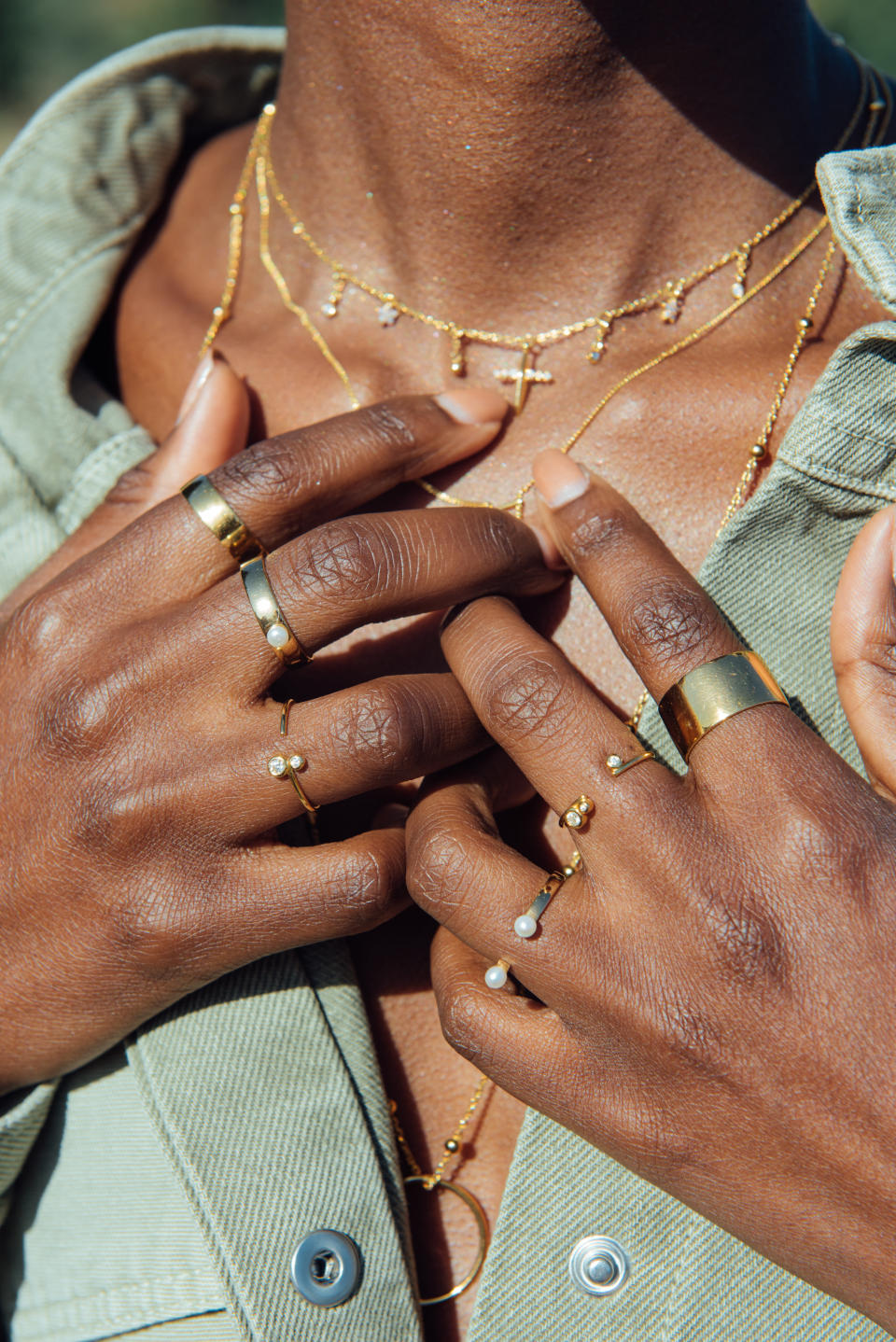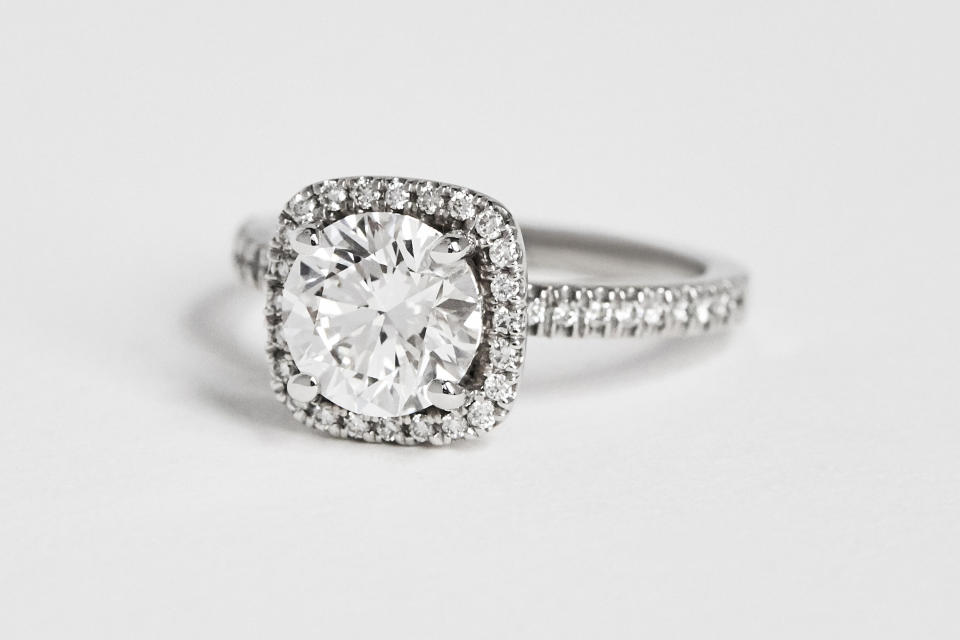Everything you've ever wanted to know about lab-grown diamonds
Diamonds last forever, but the way we go about getting them isn’t set in stone. Traditionally, diamonds have been sourced through mining, a technique that got a bad rep after 2006’s Blood Diamond. Since then, diamond retailers have gotten a lot stricter on regulating humane conditions via the Kimberly Process, which makes sure that diamonds are ethically mined. Still, even though mining diamonds is more humane nowadays, we’ve learned that human labor isn’t even necessary to get a diamond. Enter lab-grown diamonds.
The first successful lab-grown diamond was made in 1954, but it wasn’t until fairly recently that they started gaining mainstream popularity. In fact, according to the latest Global Diamond Report 2019 from Bain & Company, the production of lab-grown diamonds increased 15 to 20 percent from 2018 to 2019. Considering their increasing popularity, we have a lot of questions, so we interviewed five diamond experts to ask them all our pressing questions surrounding lab-grown diamonds. Here’s what they had to say:

First things first, are lab-grown diamonds real diamonds?
Yes. They are physically, optically, and chemically identical to the mined diamonds we’re used to seeing. Additionally, they also use the same IGI certification and inspection process, which includes grading for the four C’s (carat, cut, color, and clarity), says Ryan Bonifacino, Co-Founder and President of Great Heights, a lab-grown diamond brand whose slogan is, “All Yours, Never Mined.”
What is the difference between a mined diamond and a lab-grown diamond?
The only thing that separates a lab-grown diamond from a mined diamond is the way it’s made. “Lab-grown diamonds are made by replicating the process that occurs in nature. There are two methods: High Pressure-High Temperature (HPHT) and Chemical Vapor Deposition (CVD),” says Bonifacino. “HPHT begins as a small diamond seed. It is exposed to temperatures of over 1500 degrees Celsius and pressurized to about 1.5 million pounds per square inch. The carbon melts and forms a diamond around the seed. CVD, which is used to create larger stones, uses a diamond seed that is heated to 800 degrees celsius, which is filled with carbon rich-gases. The carbon attaches to the diamond seed and crystallizes.” This whole process takes between four and ten weeks.
Another factor to consider when shopping for diamonds is the environment, and there are things to consider for both mined diamonds and lab-grown diamonds. To access a mined diamond, Sophie Williams, the Senior Brand Marketing Associate for jewelry brand Astrid & Miyu, says, requires millions of liters of diesel and digging two to five miles underground, displacing hundreds of tons of earth. “In fact,” she says, “for a single carat of diamond, approximately 250 tons of earth has to be dug up, 2011 ounces of air pollution is released and 143 pounds of CO2 is emitted. Therefore natural diamonds are contributing to issues such as global warming, deforestation and soil erosion. The carbon footprint of lab-grown diamonds is around 5-10% of mined diamonds.”
However, don’t be too quick to assume that all lab diamonds are eco-friendly. In 2018, the Federal Trade Commission sent a letter to companies that were marketing their lab diamonds as eco-friendly, sustainable, or eco-conscious, warning them that they could not make those claims if they did not back them up and immediately disclose that they were not selling mined stones. Also, huge amounts of energy are needed to make lab diamonds, most of which is drawn from local power grids, and according to Forbes, this is mostly done in countries primarily reliant on coal and natural gas.
Are lab-grown diamonds more affordable than mined diamonds?
Lab-grown diamonds typically cost 30-40% less than mined diamonds. However, Taylor Lanore, a diamond and engagement ring design consultant at Ring Concierge, says that unlike mined diamonds, lab-grown ones don’t hold the same value for trading or re-sale. “If you’re looking for the biggest diamond that you can get for the price and don’t intend upon trading it in or selling it, lab-grown diamonds could be a really great route,” she says. “If you want to make a purchase and ensure there is longevity in the value, a mined diamond is the way to go.”

What do lab-grown diamonds mean for the diamond industry as a whole?
The Carat Lab co-founders, Kavika and Vivek Baid, believe that lab diamonds will encompass a majority of the diamond jewelry market but note that while most people still seek mined diamonds for their engagement rings, they are more than happy saving a bundle on their everyday jewelry. A 2019 report released by the International Grown Diamond Association found that once consumers learned about lab-grown diamonds, the reaction among millennials was 84% positive (10% higher than non-millennials). The report also included a 2018 survey conducted by MVI Marketing of millennial consumers actively shopping for engagement rings. Of the respondents, 66% said they would consider lab-grown diamonds, and 23% said they would definitely buy a ring with lab-grown diamonds.
Shimmer and shine ~ @amrsxx 💫 Tap to shop this dreamy stack #astridandmiyu
A post shared by Astrid & Miyu (@astridandmiyu) on Dec 20, 2019 at 3:50am PST
What are some of the biggest misconceptions about lab-grown diamonds?
All the experts interviewed for this piece agreed that the biggest misconception about lab diamonds is that they’re not real diamonds, and Lanore and Bonifacino said that lab diamonds also get confused with diamond alternatives, such as moissanite or cubic zirconia.
Whether you’re in the market for an engagement ring or simply looking around for diamond jewelry, lab-growns are the most affordable way to get some serious bling.

